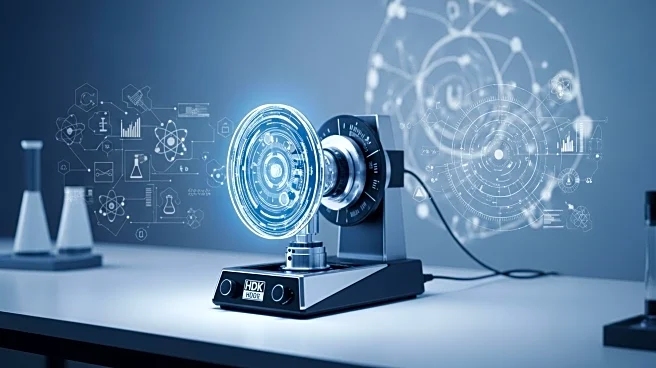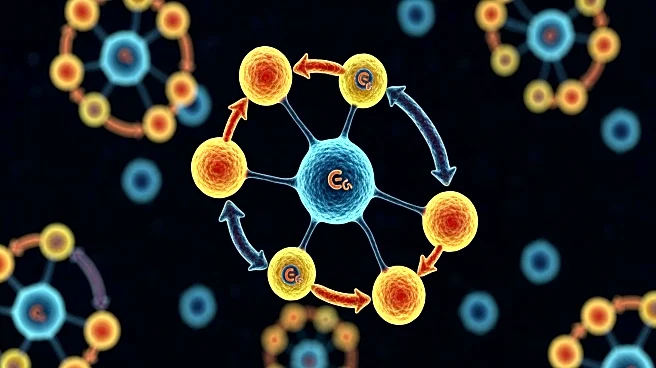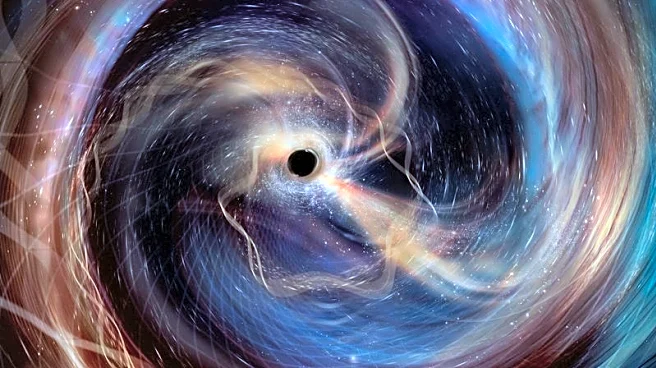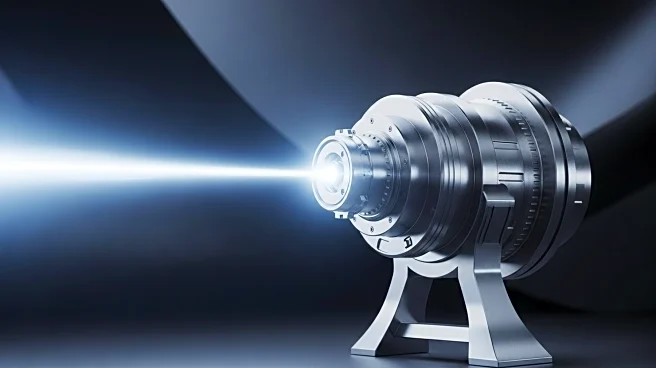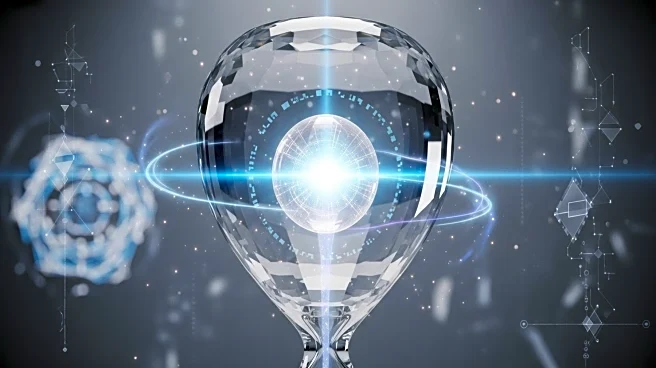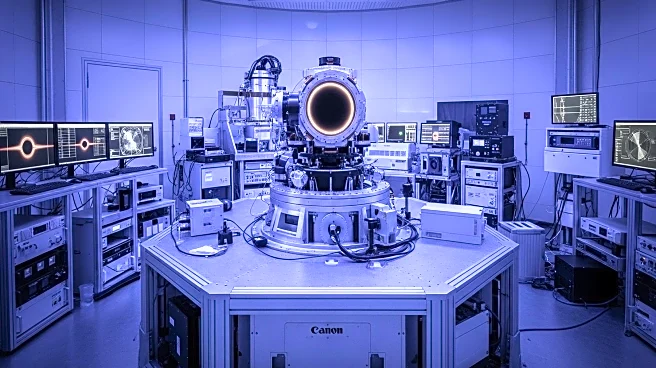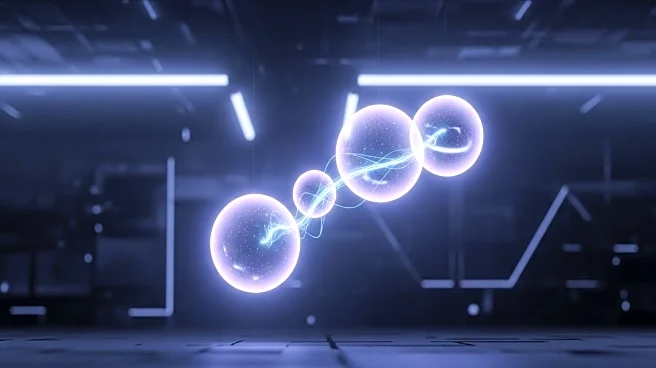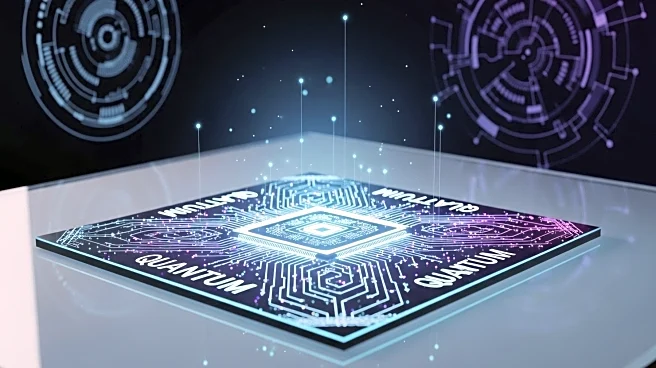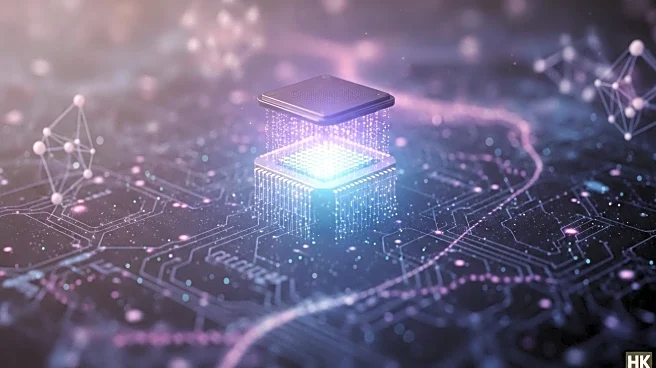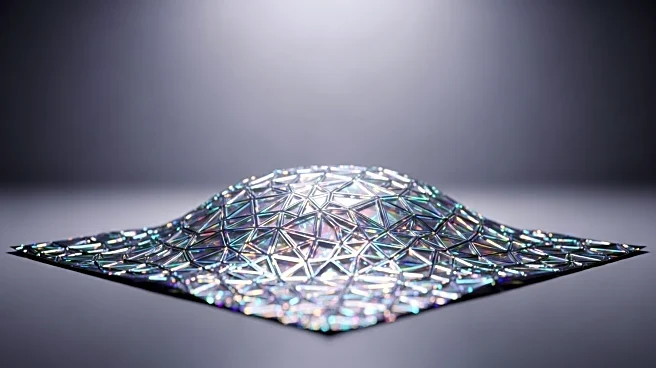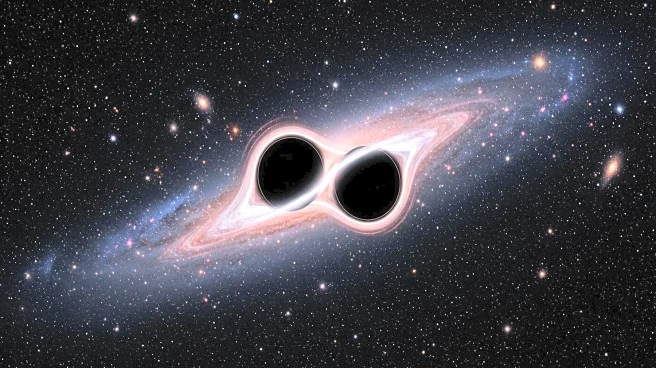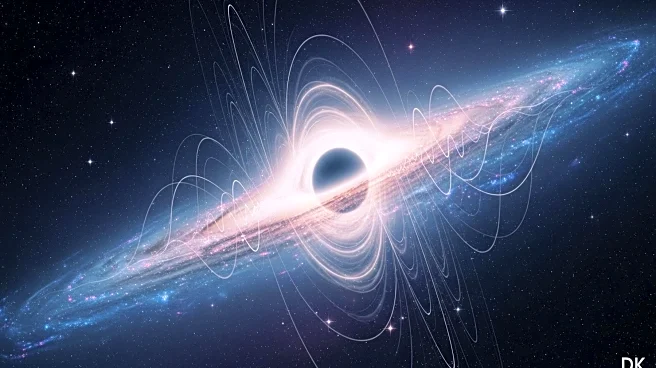What is the story about?
What's Happening?
Researchers at Hiroshima University have developed a method to detect the Unruh effect, a theoretical phenomenon at the intersection of general relativity and quantum mechanics. The Unruh effect suggests that an accelerating observer perceives vacuum fluctuations as real particles with thermal energy. The proposed method involves using circular motion in superconducting circuits to achieve the necessary high accelerations, making the effect detectable. This approach could provide experimental verification of the Unruh effect, which has been a significant challenge due to the extreme accelerations required. The research, published in Physical Review Letters, aims to bridge the gap between these two fundamental theories of physics.
Why It's Important?
The ability to experimentally verify the Unruh effect would be a major breakthrough in physics, potentially offering insights into the nature of spacetime and contributing to the development of a unified theory of physics. This research could also advance quantum sensing technologies, as the detection method involves highly sensitive superconducting circuits. The implications extend beyond fundamental physics, potentially impacting fields that rely on quantum mechanics and relativity. Successful detection of the Unruh effect could inspire further research and innovation in quantum technologies, benefiting scientific and technological communities.
What's Next?
The researchers plan to conduct detailed analyses of the decay processes involved in their detection method, focusing on macroscopic quantum tunneling. This will help refine their experimental approach and improve the accuracy of detecting the Unruh effect. The team also aims to explore connections between the Unruh effect and other quantum fields, which could lead to new discoveries in fundamental physics. As the research progresses, it may open new avenues for understanding quantum reality and spacetime, potentially influencing future studies and applications in quantum technologies.
AI Generated Content
Do you find this article useful?
